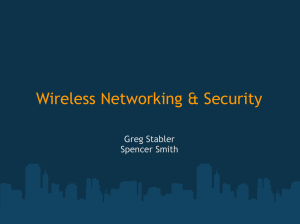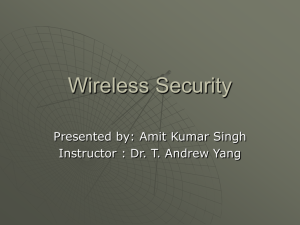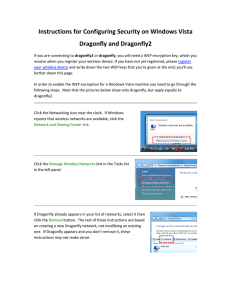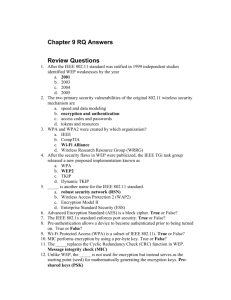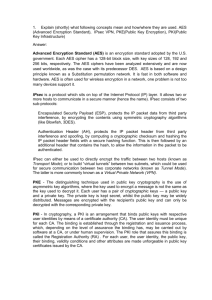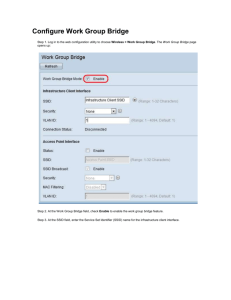Security_Protocol_Lesson
advertisement
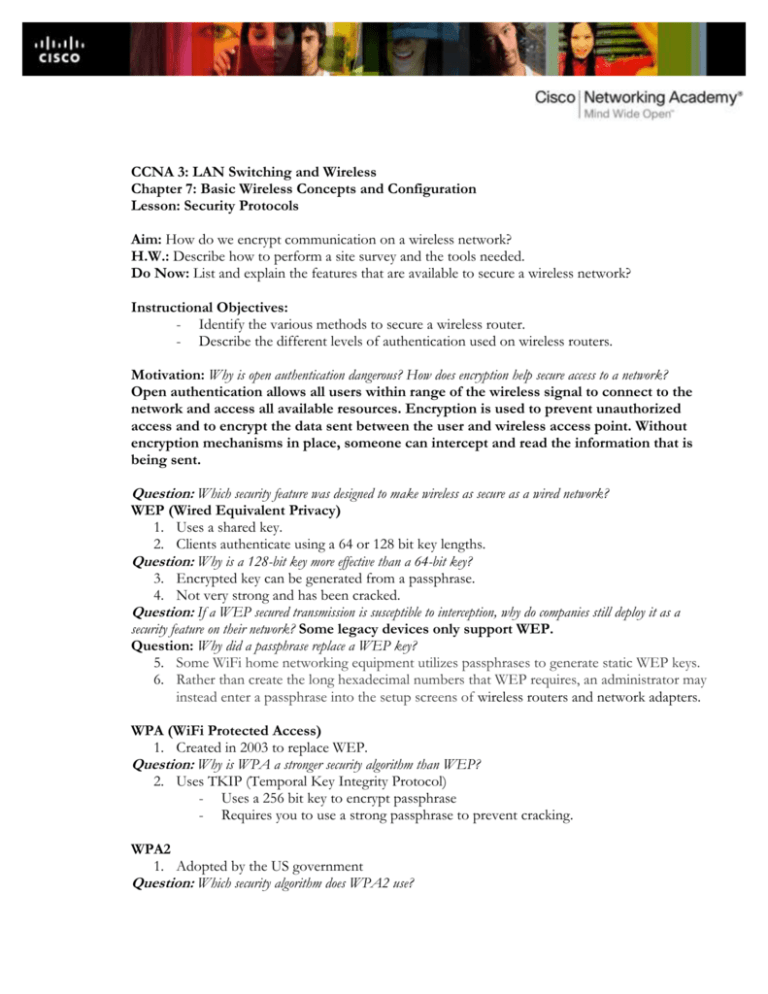
CCNA 3: LAN Switching and Wireless Chapter 7: Basic Wireless Concepts and Configuration Lesson: Security Protocols Aim: How do we encrypt communication on a wireless network? H.W.: Describe how to perform a site survey and the tools needed. Do Now: List and explain the features that are available to secure a wireless network? Instructional Objectives: - Identify the various methods to secure a wireless router. - Describe the different levels of authentication used on wireless routers. Motivation: Why is open authentication dangerous? How does encryption help secure access to a network? Open authentication allows all users within range of the wireless signal to connect to the network and access all available resources. Encryption is used to prevent unauthorized access and to encrypt the data sent between the user and wireless access point. Without encryption mechanisms in place, someone can intercept and read the information that is being sent. Question: Which security feature was designed to make wireless as secure as a wired network? WEP (Wired Equivalent Privacy) 1. Uses a shared key. 2. Clients authenticate using a 64 or 128 bit key lengths. Question: Why is a 128-bit key more effective than a 64-bit key? 3. Encrypted key can be generated from a passphrase. 4. Not very strong and has been cracked. Question: If a WEP secured transmission is susceptible to interception, why do companies still deploy it as a security feature on their network? Some legacy devices only support WEP. Question: Why did a passphrase replace a WEP key? 5. Some WiFi home networking equipment utilizes passphrases to generate static WEP keys. 6. Rather than create the long hexadecimal numbers that WEP requires, an administrator may instead enter a passphrase into the setup screens of wireless routers and network adapters. WPA (WiFi Protected Access) 1. Created in 2003 to replace WEP. Question: Why is WPA a stronger security algorithm than WEP? 2. Uses TKIP (Temporal Key Integrity Protocol) - Uses a 256 bit key to encrypt passphrase - Requires you to use a strong passphrase to prevent cracking. WPA2 1. Adopted by the US government Question: Which security algorithm does WPA2 use? 2. Uses AES encryption. Question: Why is AES more secure than TKIP? - AES has a block size of 128 bits and a key size of 128, 192, or 256 bits. - The block size has a max of 256 bits but the key size has no theoretical maximum (the key is the actual password being encrypted)… - The AES cipher is specified as a number of repetitions of transformation rounds that convert the input plain text to the final output cipher text. - Uses a symmetrical key which means it uses the same key to encrypt and decrypt the data - AES has ten rounds for a 128 bit keys, 12 rounds for 192 bit keys and 14 rounds for 256 bit keys. Question: How is cipher text created from plain text? 3. Cipher text is the result of encryption performed on plaintext using an algorithm, called a cipher. Summative Questions Why is it recommended to secure access to wireless networks? Why is WEP used when it has been proven to be easily cracked? Why is WPA2 more secure than WPA? Why was a passphrase used in place of a WEP key?

